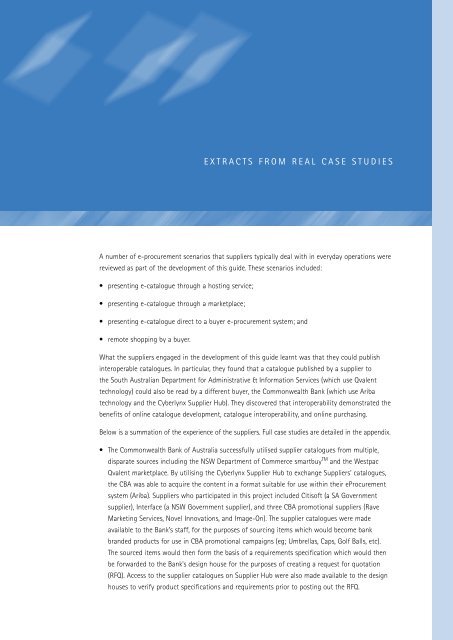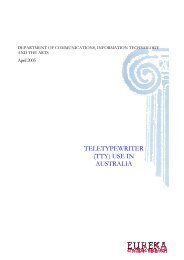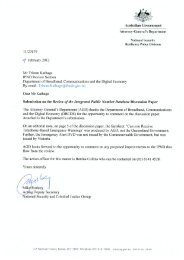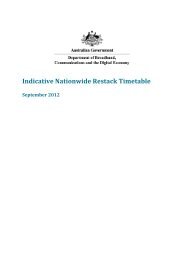From paper to procurement effective catalogue creation and ...
From paper to procurement effective catalogue creation and ...
From paper to procurement effective catalogue creation and ...
You also want an ePaper? Increase the reach of your titles
YUMPU automatically turns print PDFs into web optimized ePapers that Google loves.
A number of e-<strong>procurement</strong> scenarios that suppliers typically deal with in everyday operations were<br />
reviewed as part of the development of this guide. These scenarios included:<br />
• presenting e-<strong>catalogue</strong> through a hosting service;<br />
• presenting e-<strong>catalogue</strong> through a marketplace;<br />
• presenting e-<strong>catalogue</strong> direct <strong>to</strong> a buyer e-<strong>procurement</strong> system; <strong>and</strong><br />
• remote shopping by a buyer.<br />
E X T R A C T S F R O M R E A L C A S E S T U D I E S<br />
What the suppliers engaged in the development of this guide learnt was that they could publish<br />
interoperable <strong>catalogue</strong>s. In particular, they found that a <strong>catalogue</strong> published by a supplier <strong>to</strong><br />
the South Australian Department for Administrative & Information Services (which use Qvalent<br />
technology) could also be read by a different buyer, the Commonwealth Bank (which use Ariba<br />
technology <strong>and</strong> the Cyberlynx Supplier Hub). They discovered that interoperability demonstrated the<br />
benefits of online <strong>catalogue</strong> development, <strong>catalogue</strong> interoperability, <strong>and</strong> online purchasing.<br />
Below is a summation of the experience of the suppliers. Full case studies are detailed in the appendix.<br />
• The Commonwealth Bank of Australia successfully utilised supplier <strong>catalogue</strong>s from multiple,<br />
disparate sources including the NSW Department of Commerce smartbuy TM <strong>and</strong> the Westpac<br />
Qvalent marketplace. By utilising the Cyberlynx Supplier Hub <strong>to</strong> exchange Suppliers’ <strong>catalogue</strong>s,<br />
the CBA was able <strong>to</strong> acquire the content in a format suitable for use within their eProcurement<br />
system (Ariba). Suppliers who participated in this project included Citisoft (a SA Government<br />
supplier), Interface (a NSW Government supplier), <strong>and</strong> three CBA promotional suppliers (Rave<br />
Marketing Services, Novel Innovations, <strong>and</strong> Image-On). The supplier <strong>catalogue</strong>s were made<br />
available <strong>to</strong> the Bank’s staff, for the purposes of sourcing items which would become bank<br />
br<strong>and</strong>ed products for use in CBA promotional campaigns (eg; Umbrellas, Caps, Golf Balls, etc).<br />
The sourced items would then form the basis of a requirements specification which would then<br />
be forwarded <strong>to</strong> the Bank’s design house for the purposes of creating a request for quotation<br />
(RFQ). Access <strong>to</strong> the supplier <strong>catalogue</strong>s on Supplier Hub were also made available <strong>to</strong> the design<br />
houses <strong>to</strong> verify product specifications <strong>and</strong> requirements prior <strong>to</strong> posting out the RFQ.







